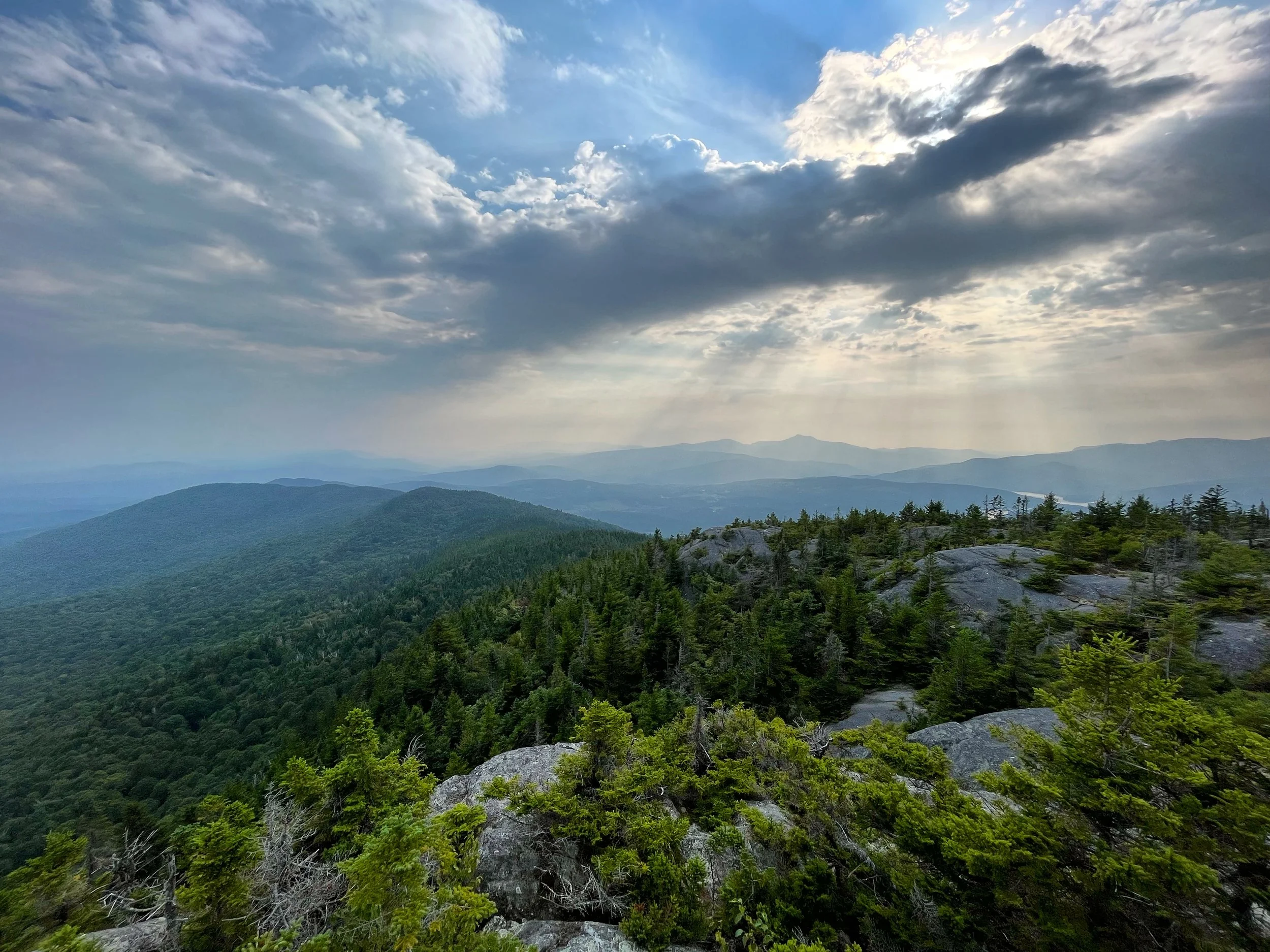
Support the Vermont State Wildlands Act
About the Act
The Vermont Climate Resilience and State Wildlands Act (State Wildlands Act), H.276, is a watershed law that directs the Vermont Agency of Natural Resources to recover natural, old-growth forests on a portion of state-managed public lands.
Although 76% of Vermont is forested, less than 1% of Vermont's forests are old-growth. The Vermont Fish and Wildlife Department recommends that at least 10% of Vermont forests should be managed to grow old to support Vermont's "ecologically functional landscape."
The State Wildlands Act protects 268,000 acres of State Parks, State Forests, and Wildlife Management Areas, increasing the amount of land managed to recover old forests from 4% to 7% of Vermont.

“This legislation represents a high-reward, low-cost strategy that will benefit Vermonters for generations to come.”
— Rep. Amy Sheldon, Middlebury
A missing tool in Vermont’s conservation toolbox
Vermont Conservation Design stipulates that at least 10% of Vermont should be managed to recover the old-growth forests that were once common across Vermont.
Act 59 of 2023, the Vermont Climate Resilience and Biodiversity Protection Act, codified these goals into law. A 2024 report by the Act 59 "State Lands Work Group" recommends that the legislature should "Establish [a] New Statutory Designation: Ecological Reserve."
Acting on this recommendation, the Vermont Climate Resilience and State Wildlands Act creates a new statutory designation for Ecological Reserves on state lands.

“Old forests are exceedingly rare in Vermont today, but in the face of climate change we need them more than ever.”
— John Roe, Sharon resident and retired forest ecologist
Learn More
-
According to the Vermont Agency of Natural Resource's Vermont Conservation Design, "Historically, the vast majority of Vermont’s landscape was old forest, and it is the original habitat condition for many species. The state’s native flora and fauna that have been here prior to European settlement are adapted to this landscape of old, structurally complex forest punctuated by natural disturbance gaps and occasional natural openings such as wetlands or rock outcrops. The complex physical structure of old forests creates diverse habitats, many of which are absent or much less abundant in younger forests." Old forests are more resilient to climate extremes, better protect downstream communities from floods, improve water quality by removing sediment and phosphorus from runoff, and sequester and store vast amounts of planet-warming carbon. Scientists estimate that Vermont's forests could store two times more carbon by 2100 if allowed to grow old.
-
As defined in the Act, wildland “means a land management designation within the category of Ecological Reserves, of any size and current condition, permanently protected from conversion, and explicitly intended and managed to allow natural processes to prevail." This definition stems from a report that was published with the help of the Vermont Agency of Natural Resources in 2023, entitled “Wildlands in New England.”
-
Yes. The best example is New York, where approximately 10% of the state’s land area, nearly 3 million acres, is protected as wildlands, primarily on state lands in the Adirondack and Catskill Forest Preserves. Today, these publicly-owned lands are among the healthiest and carbon-rich forest ecosystems in the eastern US, and attract visitors from around the world.
-
The Act has no impact on recreational trails, public access roads, campgrounds, cabins, ski areas, hunting, fishing, gathering, foraging, and other established uses. Home construction is not allowed on Vermont state lands, so this Act will have no impact on housing.
-
80% of Vermont is privately owned, and the vast majority of these lands are legally available for timber harvest. Only 2% of Vermont's annual wood harvest comes from state lands. Vermont does not have a wood shortage: on average, 50% more timber is harvested annually than is consumed in-state. Vermont is already committed by statute to managing 10% of the state's land area to recover old forests. The State Wildlands Act is a low-cost strategy to increase flood protection for Vermont communities, improve water quality, protect biodiversity, remove planet-warming carbon, and support our recreation economy, all while minimizing impacts to the flow of wood products.

“This bill is an insurance policy against flood disasters that are plaguing towns across Vermont.”
— Jamison Ervin, Duxbury resident and Selectboard member
Sign the Letter
Join the growing list of citizen co-sponsors for the Vermont Climate Resilience and State Wildlands Act (H.276) and we will keep you up-to-date on news and action opportunities for this important legislation! By endorsing, you are adding your name to the following letter:
We, the undersigned organizations and individuals, strongly support the Vermont Climate Resilience and State Wildlands Act. By designating core state lands as wildlands, this important legislation will protect Vermont’s cherished landscapes, strengthen climate resilience, and safeguard wildlife habitat, all while reducing the devastating impacts of flooding and other climate extremes…
Want to Do More?
-
For Vermont Residents: Write to your legislators expressing your support for the Wildlands Act. Visit this page to write your letter.
-
Contact Representative Amy Sheldon (D-Middlebury), Chair of the House Environment Committee, to thank her for introducing this forward-looking bill, and encourage her to bring the bill up for discussion in committee.
-
If you want to take your Vermont Wildlands advocacy a step further, consider writing a letter to the editor in support of the bill, and spreading the word about the Wildlands Act among your other networks. If you’d like Standing Trees to talk with the community groups you are a part of about the Wildlands Bill, or have questions about taking any other actions in support of this bill, please reach out.




